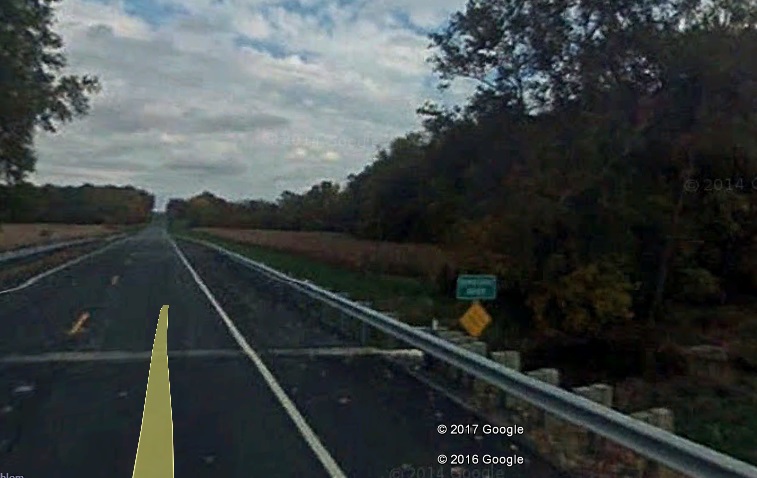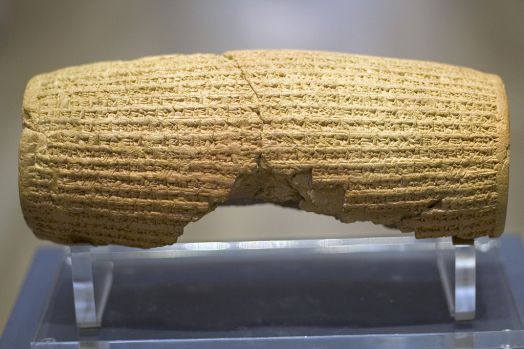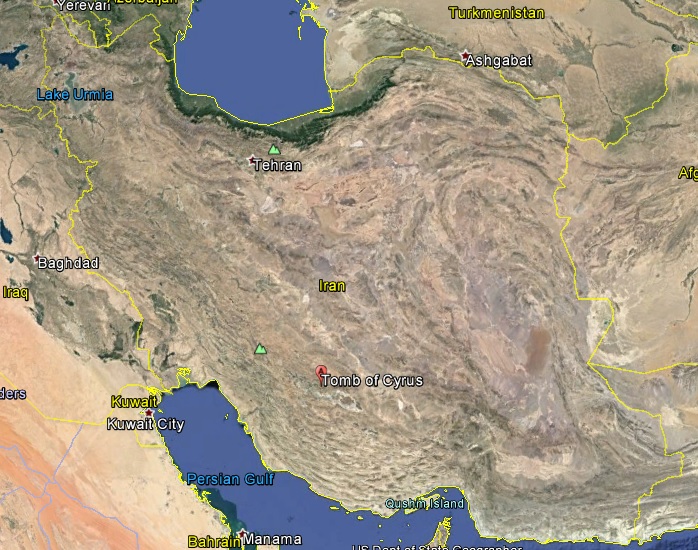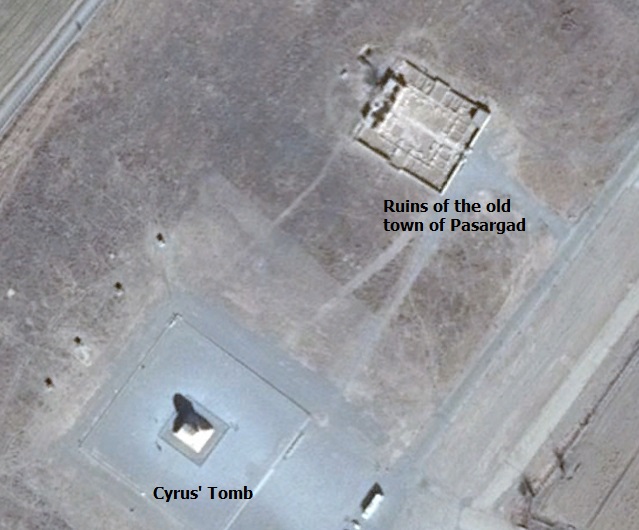First timer? In this formerly once-a-day blog (and now pretty much a once-every-four-or-five days blog), I use an app that provides a random latitude and longitude that puts me somewhere in the continental United States (the lower 48). I call this “landing.”
I keep track of the watersheds I land in, as well as the town or towns I land near. I do some internet research to hopefully find something of interest about my landing location.
To find out more about A Landing A Day (like who “Dan” is) please see “About Landing” above. To check out some recent changes in how I do things, check out “About Landing (Revisited).”
Landing number 2346; A Landing A Day blog post lucky number 777.
 Dan: Today’s lat/long 40o 47.394’N, 83o 3.302’W) puts me in Central-NW Ohio:
Dan: Today’s lat/long 40o 47.394’N, 83o 3.302’W) puts me in Central-NW Ohio:
My local landing map shows my immediate proximity to Bucyrus:
I have a straight-forward watershed analysis:
As you can see, I landed in the watershed of the Sandusky River (2nd hit), which discharges into Lake Erie (11th hit). Of course, the waters of Lake Erie end up in the St. Lawrence (107th hit).
It’s time to hop on our trusty yellow push-pin and take a ride. Click HERE.
I land adjacent to an intersection of two roads that look as though they should be Street View-worthy. Well, looks can be deceiving:
So, I have to get a look from about 2 miles away:
And here’s where I get a look at the Sandusky:
The picture quality is lousy, but here ‘tis:
And bless you Ohio DOT, for letting unwary drivers know that they’re crossing the not-so-mighty Sandusky:
And there’s not even a bridge!
Just so you know, the Sandusky claims some river-dignity up close to Lake Erie:
Moving on to Bucyrus. From Wiki:
The town was named by Col. James Kilbourne, who laid out the town in 1822. The name’s origin is uncertain; one theory is that the name is derived from “beautiful” coupled with the name of Cyrus the Great, founder of the First Persian Empire. An alternate theory is that the city was named after Busiris, a city of ancient Egypt.
I’ll reject the “Busiris” angle for two reasons: 1. There would have been no reason to change the spelling, and 2. “Busiris” (an ancient Egyptian place name) is primarily known from an obscure corner of Greek Mythology.
So that leaves us with Beautiful Cyrus. I’m inclined to reject that as well; but since I’ve already rejected Busiris, I guess I’m stuck with it.
For the record, there are 6 teeny towns across America named Cyrus (NC, KY, WV, MO, MN and PA). The largest (and only incorporated town) is in MN (pop 258), which was named after the last name of a settler. There is no other Bucyrus in the U.S. or anywhere in the world.
So what the heck, how about a little information on Cyrus the Great, Persian emperor circa 550 BC? I for one knew nothing about him. But thanks to Wiki, I learned quite a bit:
Cyrus the Great was the founder of the Persian Empire. Under his 30-year rule (from 560 to 530 BC) the empire embraced all the previous civilized states of the ancient Near East, expanded vastly and eventually conquered most of Southwest Asia and much of Central Asia and the Caucasus. From the Hellespont (the waterway between the Black Sea and the Mediterranean Sea) in the west to the Indus River in the east, Cyrus the Great created the largest empire the world had yet seen.
Here’s a map of the Empire (which includes Egypt, added by Cyrus’ son):
Back to Wiki:
Cyrus the Great respected the customs and religions of the lands he conquered. This became a very successful model for a centralized administration, establishing a government that worked to the advantage and profit of its subjects.
What is sometimes referred to as the Edict of Cyrus (described in the Bible) left a lasting legacy on the Jewish religion. This edict authorized and encouraged Jews who had been exiled to Babylonia to return to Israel and rebuild the Temple. Cyrus is referred to in the Bible as “His [the Lord’s] anointed” (Isaiah 45:1), and is the only non-Jew to be called so.
Here are the first three verses of Isaiah 45. (Isaiah 45 is often titled “Cyrus, God’s Instrument”):
1
“Thus says the Lord to His anointed,
To Cyrus, whose right hand I have held—
To subdue nations before him
And loose the armor of kings,
To open before him the double doors,
So that the gates will not be shut:
2
‘I will go before you
And make the crooked places straight;
I will break in pieces the gates of bronze
And cut the bars of iron.
3
I will give you the treasures of darkness
And hidden riches of secret places,
That you may know that I, the Lord,
Who call you by your name,
Am the God of Israel.
Wow. The Lord thought mighty highly of Cyrus, eh? He saw fit to make sure that Cyrus succeeded in his conquests! And interesting that He identified Himself as the God of Israel (implying that maybe he wasn’t also the God of Persia?). Although in the third verse, He wanted to make sure that Cyrus knew who was calling the shots. . .
Anyway, back to Wiki:
Cyrus the Great is also well recognized for his achievements in human rights, politics, and military strategy, as well as his influence on both Eastern and Western civilizations. Having originated from Persis, roughly corresponding to the modern Iranian province of Fars, Cyrus has played a crucial role in defining the national identity of modern Iran.
There’s a fascinating artifact known as the Cyrus Cylinder. From Wiki, here are pictures of the front and back of the cylinder:
It’s little, only measuring 9″ x 4″.
Also from Wiki:
The Cyrus Cylinder is an ancient clay cylinder, now broken into several pieces, on which is written a declaration in Akkadian cuneiform script in the name of Persia’s King Cyrus the Great. It dates from the 6th century BCE and was discovered in the ruins of Babylon in Mesopotamia (modern Iraq) in 1879.
It is currently in the possession of the British Museum, which sponsored the expedition that discovered the cylinder.
It was created following the Persian conquest of Babylon by Cyrus in 539 BC, when the Babylonian Empire was incorporated into his Persian Empire.
The text on the Cylinder praises Cyrus, sets out his genealogy and portrays him as a king from a line of kings. The Babylonian king Nabonidus, who was defeated and deposed by Cyrus, is denounced as an impious oppressor of the people of Babylonia and his low-born origins are implicitly contrasted to Cyrus’s kingly heritage.
[Amazing how the winner gets to write the hitory . . . ]
The victorious Cyrus is portrayed as having been chosen by the chief Babylonian god Marduk to restore peace and order to the Babylonians. The text states that Cyrus was welcomed by the people of Babylon as their new ruler and entered the city in peace.
It appeals to Marduk to protect and help Cyrus and his son Cambyses. It extols Cyrus as a benefactor of the citizens of Babylonia who improved their lives, repatriated displaced people and restored temples and religious sanctuaries across Mesopotamia and elsewhere in the region.
The Cylinder’s text has traditionally been seen by biblical scholars as corroborative evidence of Cyrus’ policy of the repatriation of the Jewish people following their Babylonian captivity (an act that the Book of Ezra attributes to Cyrus).
Neil MacGregor, Director of the British Museum, has stated that the cylinder was “the first attempt we know about running a society, a state with different nationalities and faiths—a new kind of statecraft.”
It was adopted as a national symbol of Iran which put it on display in Tehran in 1971 to commemorate 2,500 year celebration of the Persian Empire. The Shah’s sister, Princess Ashraf Pahlavi, presented the United Nations Secretary General U Thant with a replica of the Cylinder. The princess asserted that “the heritage of Cyrus was the heritage of human understanding, tolerance, courage, compassion and, above all, human liberty”.
Reception in the Islamic Republic
In September 2010, former Iranian president Mahmoud Ahmadinejad officially opened the Cyrus Cylinder exhibition at the National Museum of Iran (where the cylinder was on loan to Iran from the British Museum). Ahmadinejad considers the Cyrus Cylinder as the incarnation of human values and a cultural heritage for all humanity, and called it the “First Charter of Human Rights”.
Ahmadinejad:
“The Cylinder reads that everyone is entitled to freedom of thought and choice and all individuals should pay respect to one another. The historical charter also underscores e necessity of fighting oppression, defending the oppressed, respecting human dignity, and recognizing human rights. The Cyrus Cylinder bears testimony to the fact that the Iranian nation has always been the flag-bearer of justice, devotion and human values throughout history.”
The cylinder is probably the only subject of agreement between the Shah and the leaders who came after the revolution . . .
Cyrus was killed in battle in the steppe region of Kazakhstan. This from Wiki about his tomb:
Cyrus the Great’s remains were interred in his capital city of Pasargadae, where today his limestone tomb (built around 540–530 BC) still exists. Though the city itself is now in ruins, the burial place of Cyrus the Great has remained largely intact; and the tomb has been partially restored to counter its natural deterioration over the centuries. According to Plutarch, his epitaph said:
“O man, whoever you are and wherever you come from, for I know you will come, I am Cyrus who won the Persians their empire. Do not therefore begrudge me this bit of earth that covers my bones.”
Years later, in the chaos created by Alexander the Great’s invasion of Persia, Cyrus the Great’s tomb was broken into and most of its luxuries were looted. When Alexander (who admired Cyrus) reached the tomb, he was horrified by the manner in which the tomb was treated.
The edifice has survived the test of time, through invasions, internal divisions, successive empires, regime changes and revolutions.
Here’s a GE shot of Iran, identifying the tomb’s location:
And a much closer view:
And closer yet.
Here’s a GE Panoramio shot of the tomb by Reza Dehghanizadeh:
Quite the guy and quite the tomb.
It’s time to head back to Ohio, and I can’t leave Bucyrus without mentioning favorite son Judson Laipply. If you know the name, you know what’s coming. He’s the famous You Tube star who burst on the scene with “Evolution of Dance” in 2006.
Join the 299,165,874 others who have viewed this video:
(OK, so maybe it’ll hit 299,200,000 by the time you view it. I wonder if the 300,000,000th viewer wins something . . .)
I’ll close with this GE Panoramio barn shot by JB the Milker (a frequent ALAD contributor):
That’ll do it . . .
KS
Greg
© 2017 A Landing A Day
















